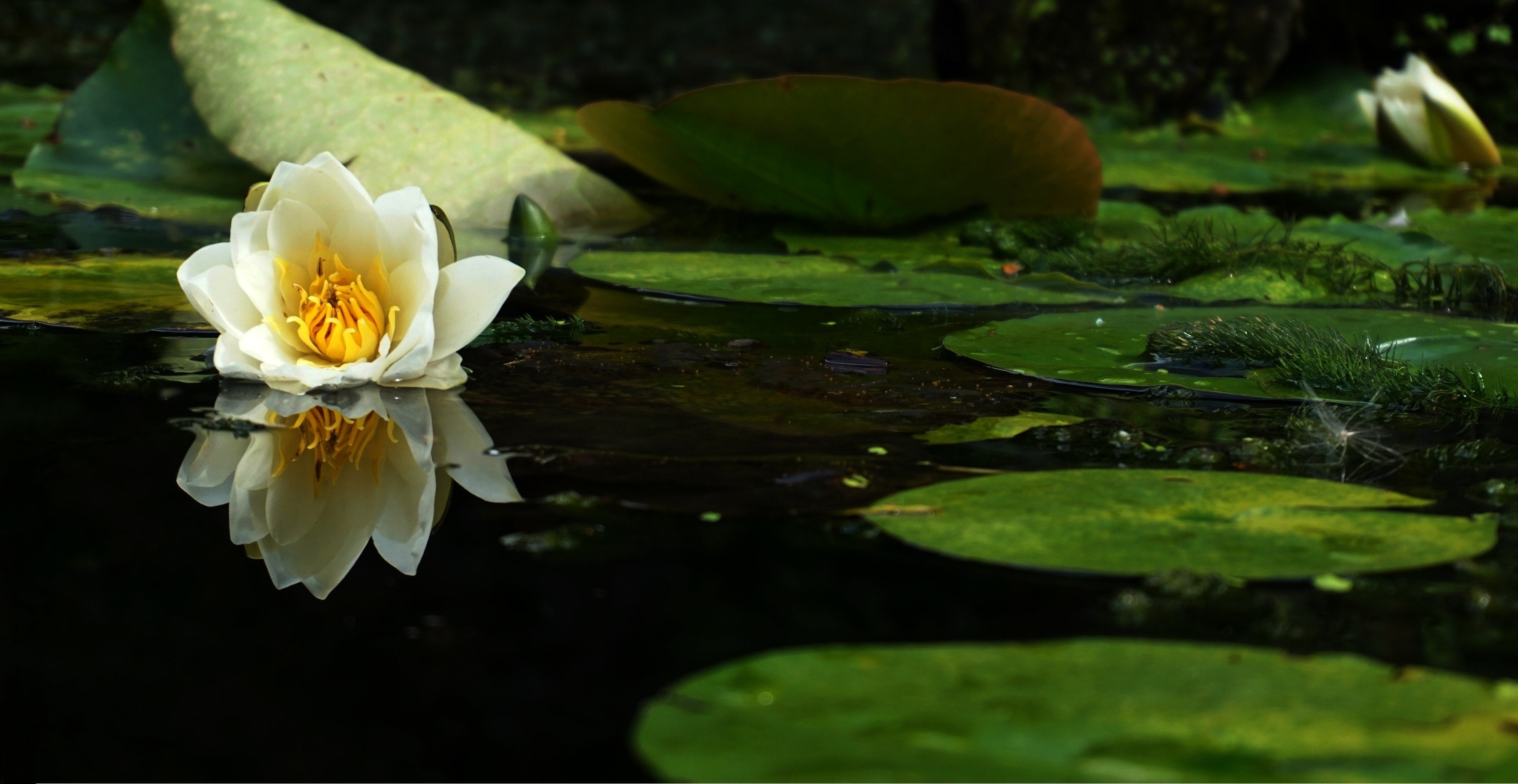Selecting plants for a pond is part art and part science. The art part comes from wanting an attractive pond that’s nice to look at. The science part is selecting species that complement your pond and provide beneficial effects.
Plants are vital in all our lives and our ponds are no different.
When you don’t have the luxury of space to place dozens of plants, careful selection of a few choice plants is key.
That’s what we’re discussing today.
We’re going to suggest a range of the best plants for small ponds.
Those that look nice while also having a beneficial effect on fish, pond life and water.
Marginal plants for a pond
Marginal plants sit at the edge of a pond or in shallow areas and are important for oxygenating the water. They can also attract insects and provide a safe place for laying eggs and shelter for fish.
Good marginal plants for small ponds include:
- Butomus umbellatus
- Caltha palustris
- Carex elata ‘Aurea’
- Cyperus papyrus
- Houttuynia cordata ‘Chameleon’
- Iris pseudacorus
- Lythrum salicaria
- Orontium aquaticum
- Pontederia cordata
- Juncus spiralis
- Acorus calamus
- Lysimachia nummularia
- Lobelia cardinalis
Each of these offers a range of colours, shapes, textures and flowers to help create a beautiful pond while also enriching the water and providing value to wildlife.
Consider how each will look planted around the others and how they will look in different seasons.
Make sure to plant using aquatic compost and perhaps an aquatic basket so each plant can thrive in its environment.
Oxygenating plants
Oxygenating plants, as their name implies, are used primarily to help keep the pond healthy. They often live under the water and will both oxygenate the water and help filter out algae.
We recommend using native plants for small ponds as they can withstand our climate better.
There are lots of oxygenating plants to choose from, including:
- Ceratophyllum dermensum
- Fontinalis antipyretica
- Hottonia palustris
- Isolepis cernua
- Myriophyllum spicatum
- Potamogeton crispus
- Ranunculus aquatilis
- Eleocharis acicularis
- Anacharis Canadensis
- Callitriche hermaphroditica
- Hippuris vulgaris
Floating plants for small ponds
Floating plants offer shelter from the sun for fish, habitat for insects and decoration to an otherwise blank space.
They can also keep water cool and discourage the growth of algae, so can be useful.
Even though the area may be small, you may have space for a floating plant or two.
- Hydrocharis morsus-ranae
- Stratiotes aloides
- Nuphar and Nymphaea spp
- Eichhornia crassipes
- Pistia stratiote
Why are plants for small ponds so important?
As we mentioned at the top, choosing plants for small ponds is part art and part science.
There is the obvious aesthetic benefit of plans in a pond but there is much more to it than that.
Most important is water oxygenation. Even if you use a pond pump or water feature, nothing beats natural processes, and plants can deliver that.
Oxygenated water not only keeps fish healthy but also attracts insects and other wildlife to the pond. If you’re trying to create a habitat as part of your pond, it’s essential!
A healthy pond attracts insects that provide food for fish and other wildlife. Which, in turn provide other additional benefits including pollination, pest control and algae control.
It’s an interconnected web of dependencies and mutual benefits that nature is so good at and something every pond owner should try to emulate as much as possible.
Plants can also help control algae and phytoplankton by filtering the water of excess nutrients and pollutants they use for food.
They also provide shade for fish in hot weather and can help control water temperature, the list goes on!
Tips for managing plants for small ponds
If you’re still at the planning stage of your pond, we have a few tips we have learned over the years.
Locating your pond
If you have the luxury of space, try to place your pond where it can get 5-6 hours of sunlight per day. It doesn’t have to be direct sunlight but as close as you can get it.
Pond plants thrive with sunlight, so the more you can give them, the better.
Always use a pond liner
Pond liners not only help stop your pond running dry, they help keep filtered, clean and oxygenated water in the pond for the fish to enjoy.
Having to constantly top up a pond isn’t fun and requires chemicals to treat tap water before being usable, which isn’t a healthy way to maintain a pond.
Use rainwater if you can
Tap water isn’t great for ponds as it contains chlorine which isn’t conducive to life. Once you have a pond liner down, allow your pond to fill naturally over time.
Use a water butt or let rain fill your pond, but the pond and your pond plants will thrive more with natural water.
Use a pond pump to encourage circulation
While your garden pond plants and filters and oxygenates the water, you want that water to circulate. That’s where a pond pump comes in.
Buy a suitable pond pump for the size of the pond and place it where it can circulate water around.
Choose native plants wherever possible
When selecting plants for a pond, try to use native plants as much as you can. They are hardier than exotics and can cope much better with the British climate.
Native plants also tend to be more attractive to wildlife, which helps contribute to the overall efficacy of your pond.
Choosing plants for a pond is one of those key moments in the life of any pond. It’s an opportunity to express your creativity while giving your pond and your pond life everything it needs to thrive!

